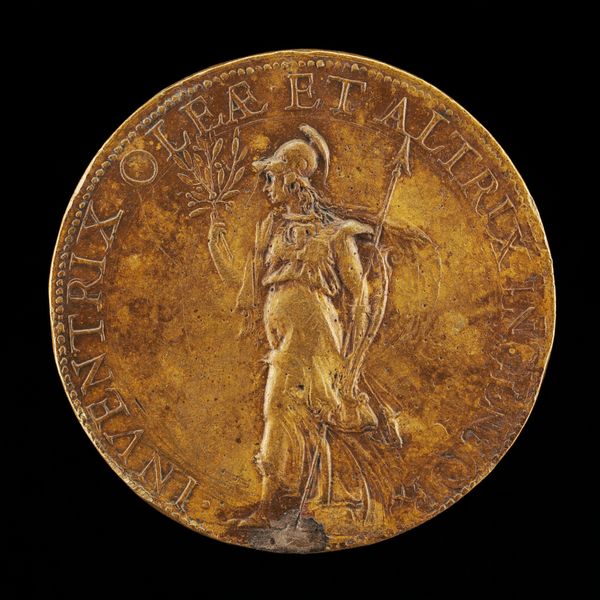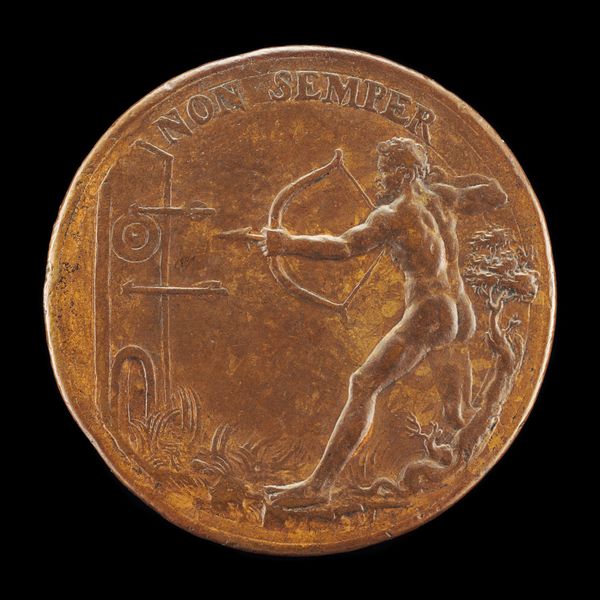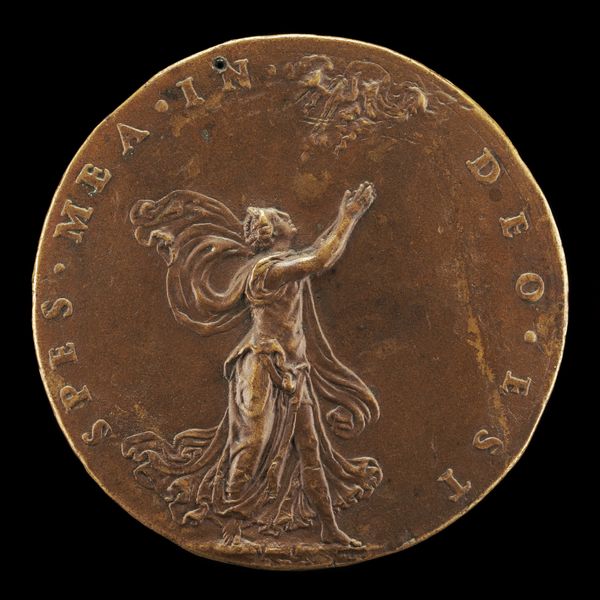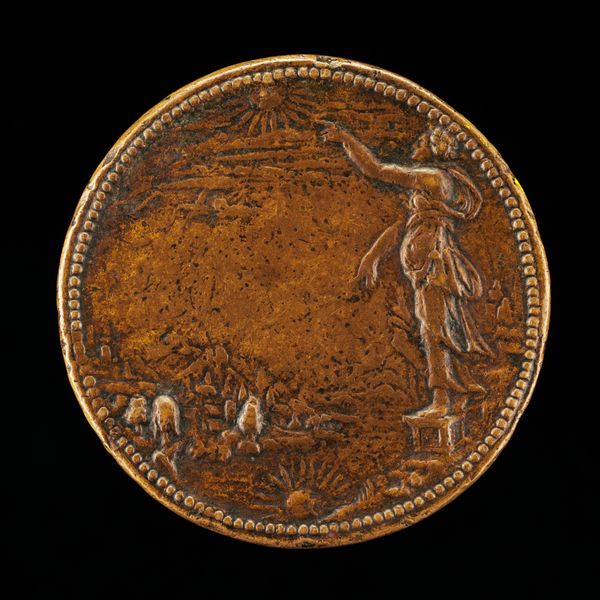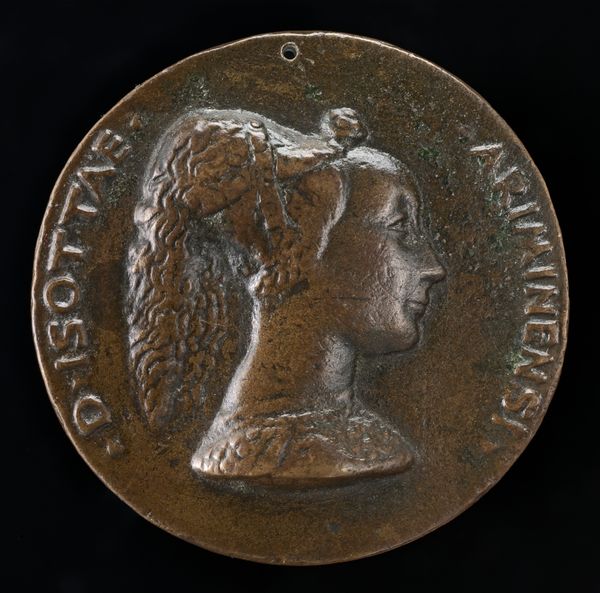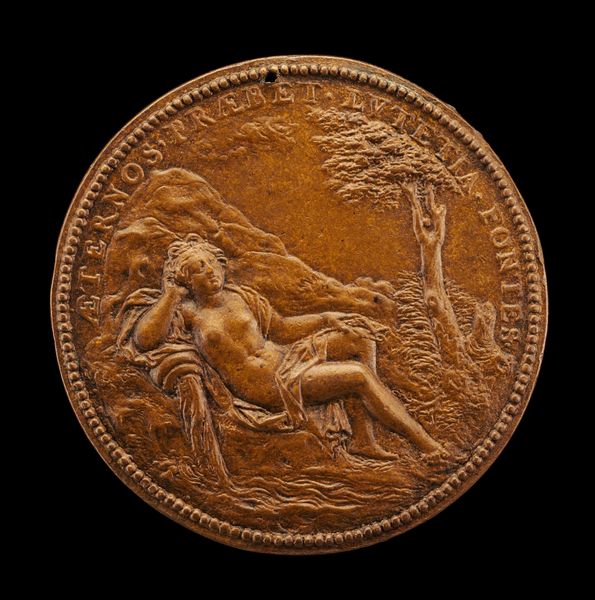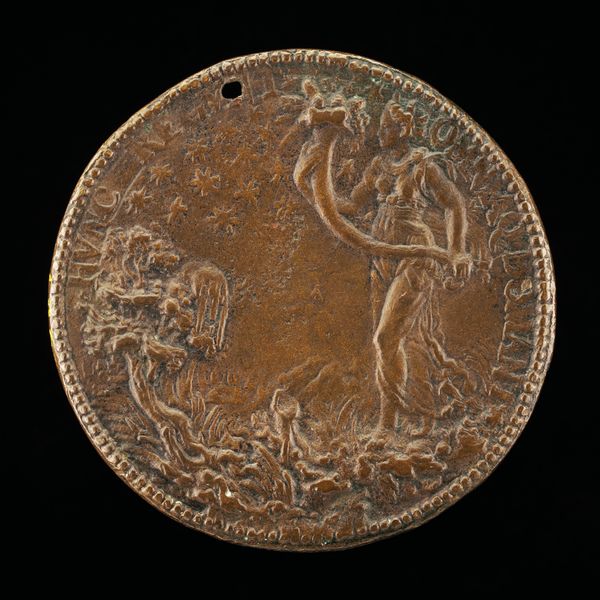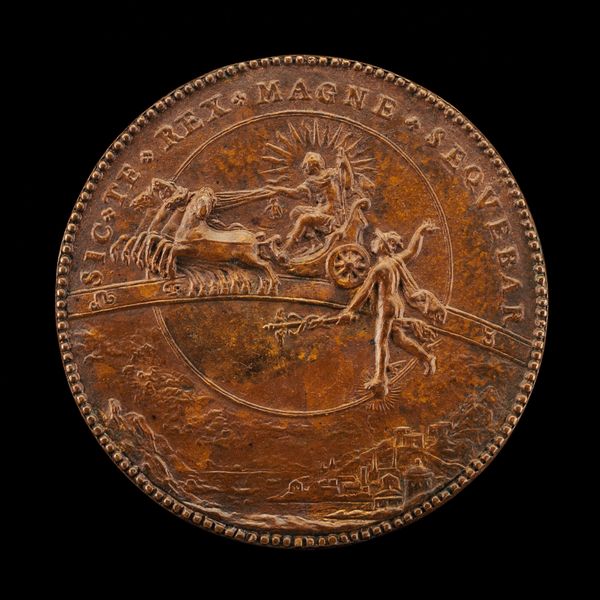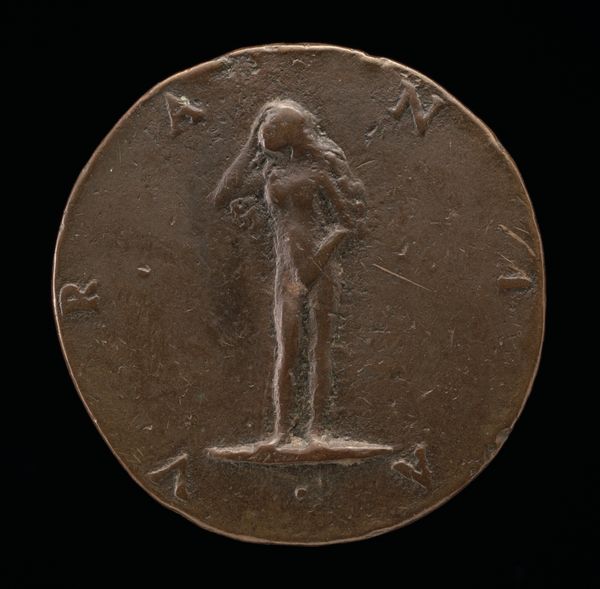![Fortune with a Veil [reverse] by Valentin Maler](/_next/image?url=https%3A%2F%2Fd2w8kbdekdi1gv.cloudfront.net%2FeyJidWNrZXQiOiAiYXJ0ZXJhLWltYWdlcy1idWNrZXQiLCAia2V5IjogImFydHdvcmtzL2RlMzQ1ZmVkLWZjYjUtNDA3Ni04Y2E0LWNhZTU0YjI3M2NmYi9kZTM0NWZlZC1mY2I1LTQwNzYtOGNhNC1jYWU1NGIyNzNjZmJfZnVsbC5qcGciLCAiZWRpdHMiOiB7InJlc2l6ZSI6IHsid2lkdGgiOiAxOTIwLCAiaGVpZ2h0IjogMTkyMCwgImZpdCI6ICJpbnNpZGUifX19&w=3840&q=75)
relief, bronze, sculpture
#
allegory
#
sculpture
#
relief
#
bronze
#
figuration
#
11_renaissance
#
sculpture
#
nude
Dimensions: overall (diameter): 3.36 cm (1 5/16 in.) gross weight: 13.78 gr (0.03 lb.) axis: 12:00
Copyright: National Gallery of Art: CC0 1.0
Editor: We are looking at "Fortune with a Veil [reverse]," a bronze relief created by Valentin Maler in 1584. The figure seems both exposed and powerful. It has a dynamic feel because of her pose, but it is on a small scale, so what should we make of this image? Curator: Considering this in the context of the late Renaissance, what sociopolitical messages might this seemingly simple bronze relief communicate? Editor: I'm not sure I see the political elements. The woman looks very classical and... almost non-denominational. Curator: Precisely. In the late Renaissance, powerful families—like the Medici, for instance—often commissioned artworks portraying allegorical figures like Fortune. This particular depiction, nude and holding a veil, becomes interesting when we consider the rise of humanism and the celebration of the individual. Do you notice how the text in Latin makes a complete circle around the edge? What can we make of the fact that it does not feature a cross or a god like in the past? Editor: So, it’s the act of commissioning art that's a political declaration in and of itself? And in not commissioning an overtly Christian image, are they making a humanist one? Curator: Absolutely. The decision to circulate images of "Fortune" serves as a subtle statement of power, and perhaps an appeal to fate amidst the turbulent political landscape of the era. Editor: It’s amazing to think that something so small could carry such a significant cultural load! Curator: Indeed! Considering the interplay between artistic production, patronage, and the shaping of social narratives opens new layers in interpreting even a single bronze relief.
Comments
No comments
Be the first to comment and join the conversation on the ultimate creative platform.
